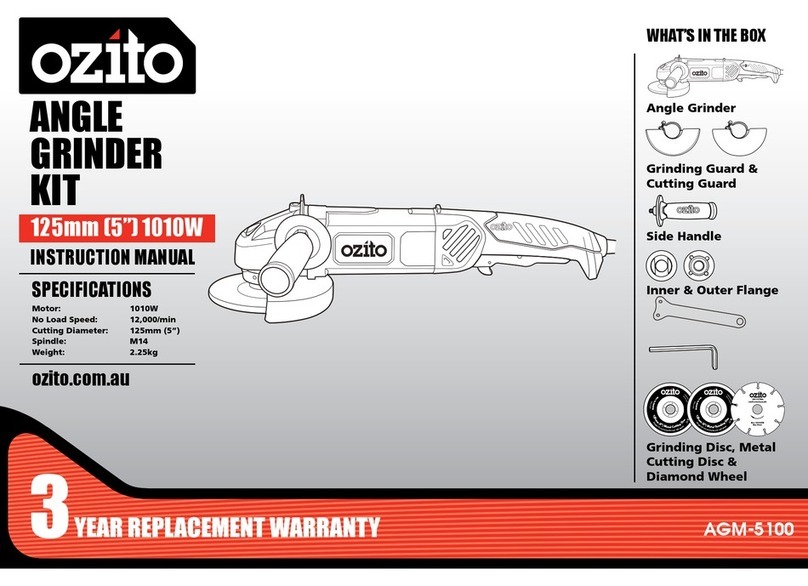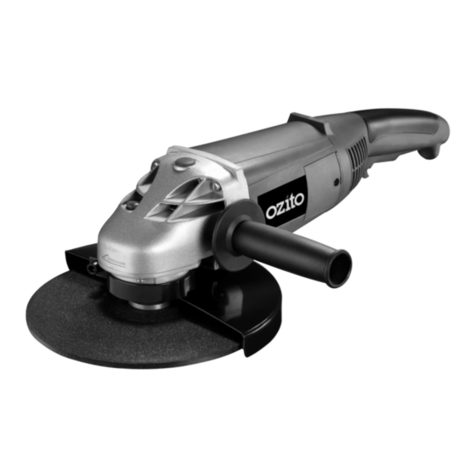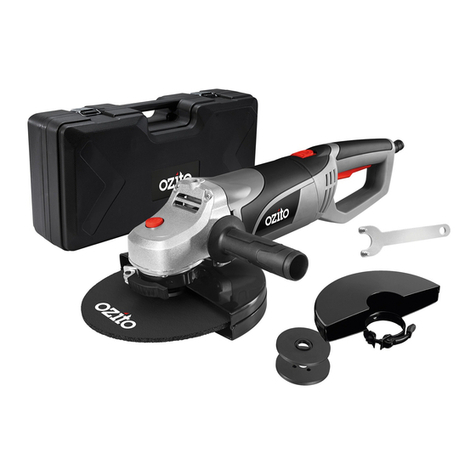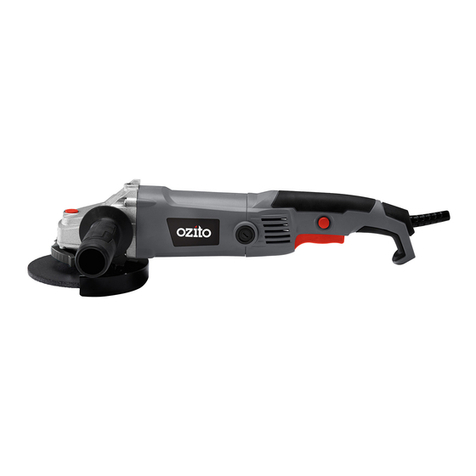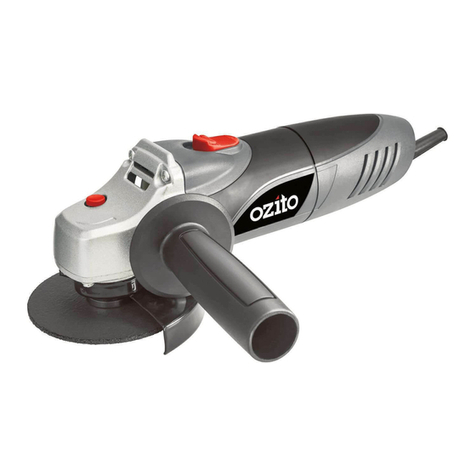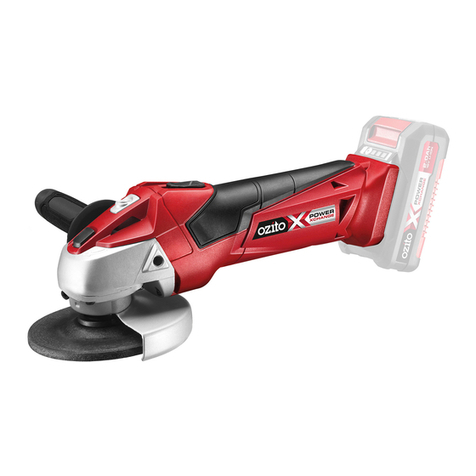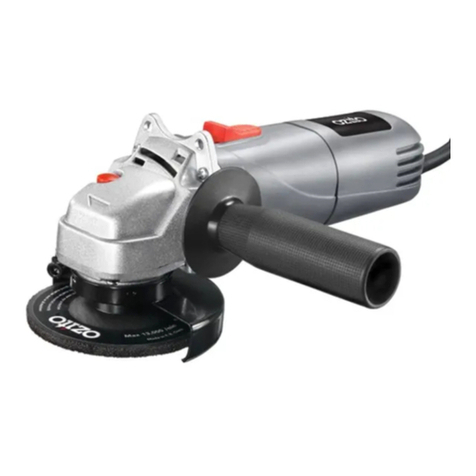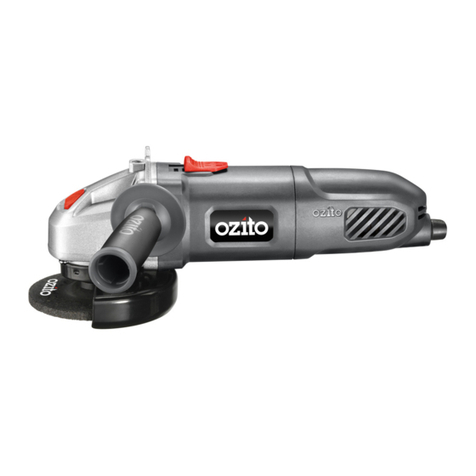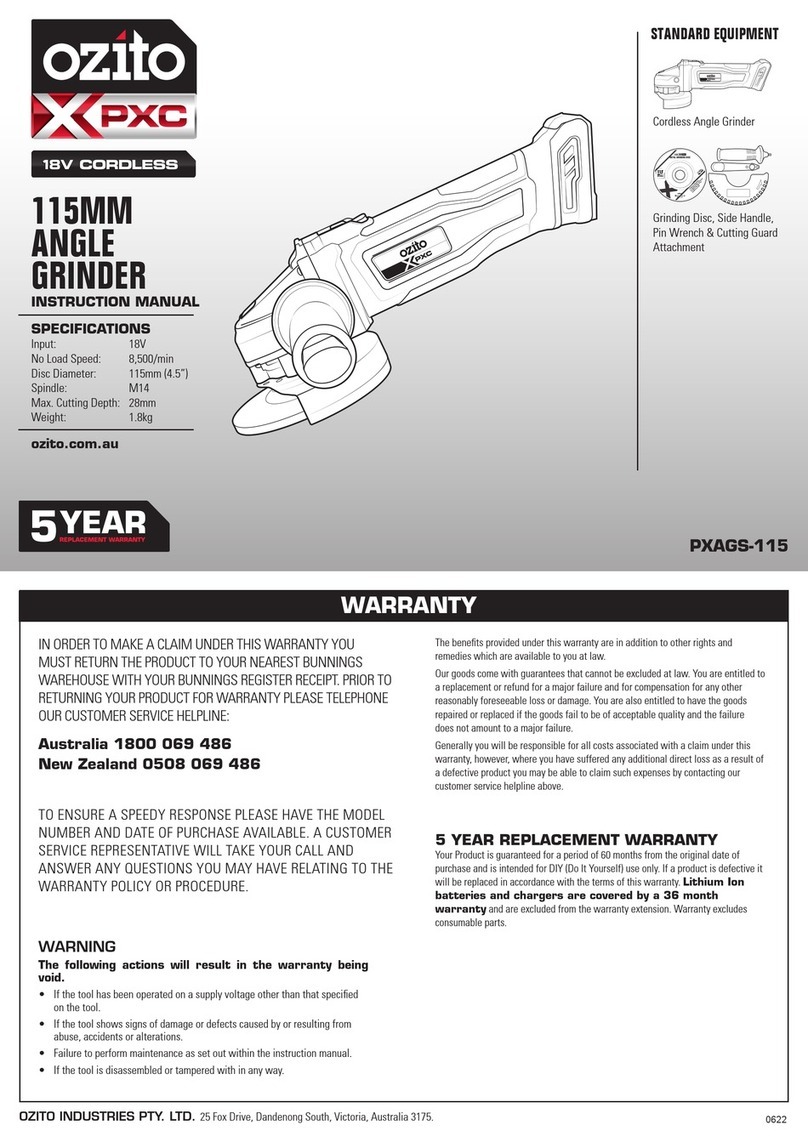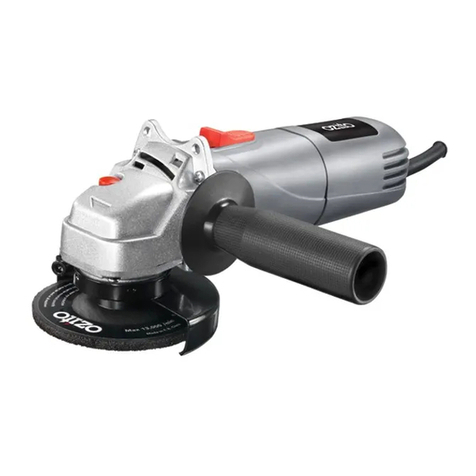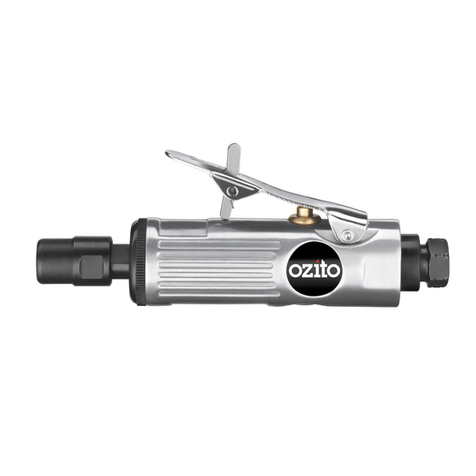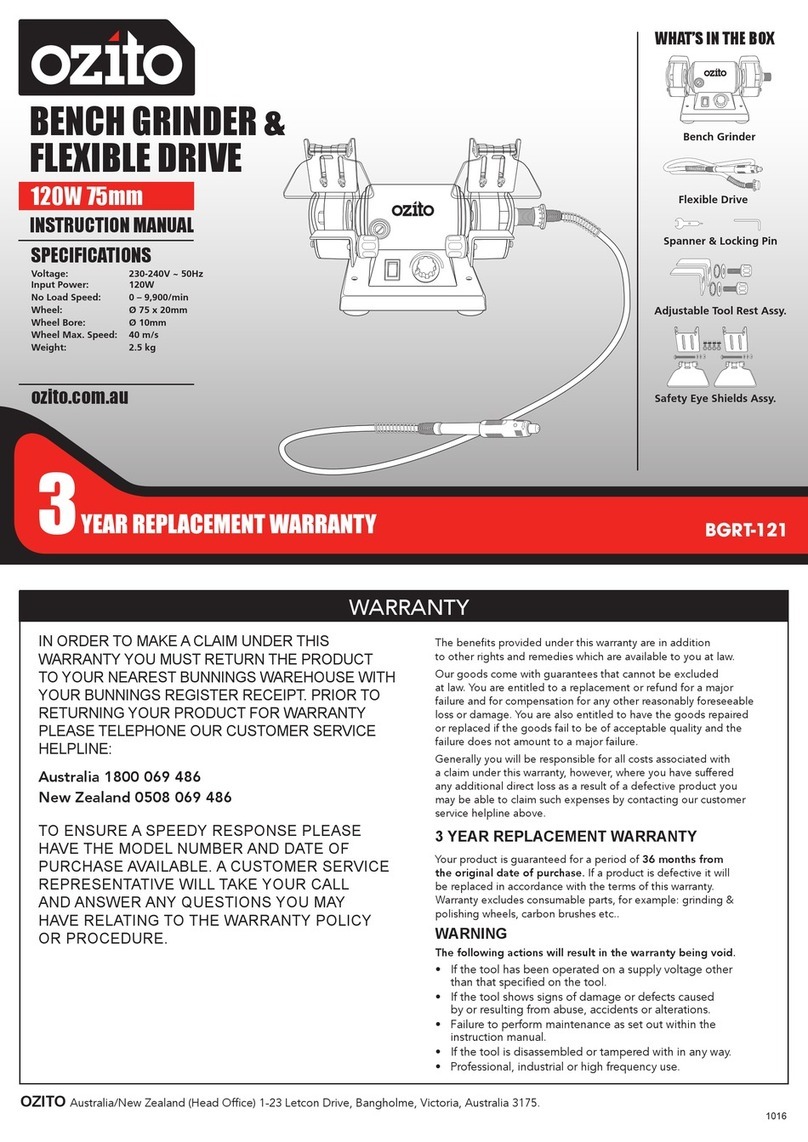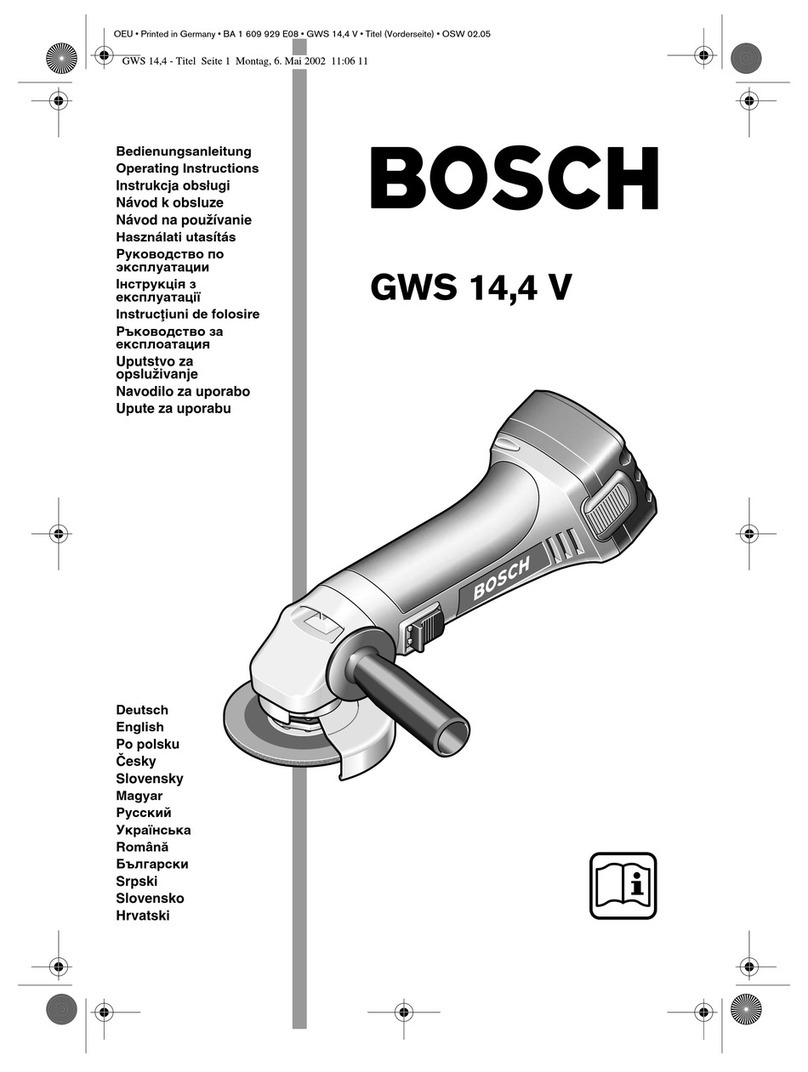OPERATION (cont.)
7
Adjusting the Safety Guard
Ensure the guard is fitted and at an angle which ensures it is between you and the
disc/wheel. The guard is there to protect you from dislodging objects at the work
piece and from accidental contact with the disc/wheel, of your hand, fingers or other
parts of your body.
To adjust the guard, loosen the guard securing screw using the allen key supplied in
the kit box. Rotate the guard into the required position, then refasten the screw.
Ensure the guard is firmly secured prior to use.
Attaching and Removing Grinding Discs
• Inspect the grinding disc before fitting and during use to ensure it is not deformed
or cracked.
Note: Always ensure replacement discs/wheels maximum no load “RPM” speed
exceeds the no load speed marked on the rating label of this grinder. Use of a disc or
wheel which maximum no load “RPM” speed is less than the grinders is a hazard.
• Remove the outer flange (threaded flange) by hand if loose. If tight, depress the
spindle lock button at the top of the metal gear case and rotate the spindle to
locate the lock position. With the spindle locked and the spindle lock button still
depressed, use the pin spanner supplied to loosen (anti-clockwise) the outer flange.
• Holding the angle grinder with the spindle facing upwards, ensure the inner flange
(non-threaded flange) is on the spindle and located correctly. The two machined
flat sections on one side of the inner flange must face the angle grinder and locate
in the appropriate position on the spindle.
•Insert the grinding disc onto the angle grinder spindle with the disc label facing
the angle grinder. The hole in the disc should be located onto the spindle. Ensure
that the hole in the disc locates and fits firmly into the ring section of the inner flange.
•Screw the outer flange onto the spindle with the raised ring section facing the
angle grinder. This ring section must locate within the hole in the disc.
• Tighten the outer flange by locking the spindle, as explained previously, then use
the pin spanner to tighten the flange.
•Removal of the disc is conducted in reverse order to the above.
Note: 80mm flanges should be used for cutting discs as they offer more support for
the disc. When fitting the outer flange (threaded flange) over a cutting disc, the raised
ring section should face away from the grinder in order for the face of the outer flange
to sit flush against the bottom side of the cutting disc. 40mm flanges should be used
for grinding discs but the 80mm flanges can also be used if they do not interfere with
the work piece you are grinding. If they come into contact with the work piece while
the disc is spinning, it may be wiser to use the 40mm flanges as such contact may
cause damage to the flanges and cause difficulty when trying to change discs.
• Regularly check that the disc outer flange has not loosened during use.
Note: When fitting a cutting disc, the raised ring section on the outer flange should
face away from the disc.
AGG-051K manual.qxd 9/24/09 9:48 AM Page 7

